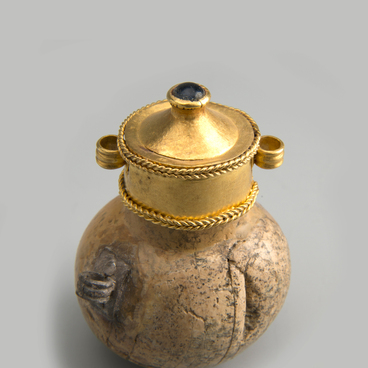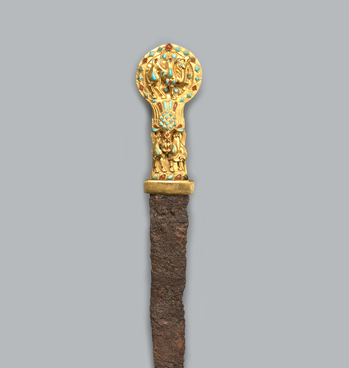The Scythians are plentiful and warlike nomadic nation that came from Asia to Northern Prichernomorye in the 4th century B.C. They dominated in this ancient world’s region of strategic importance for a period of four centuries.
The authentic culture of the Scythians greatly influenced neighbouring tribes. Historians have identified three fundamental aspects of it: weapons, which were advanced for their time, a grand horse gear and the so-called ‘zoomorphic ornament’, an individual genre of the ancient art that predominantly depicted animals and birds in ornaments.
This bony plate that was found by archeologists in Konstantinovka, Rostov Oblast, is relating to the earliest Scytho-Siberian zoomorphic ornament works. This genre is defined by definite images: artists depicted hoofed mammals, predators, birds and fantastical animals. These figures were portrayed, carved or embossed in strictly defined postures of motion and sometimes jumping.
Zoomorphic ornament could be based on even more ancient ideas about animals, treated thereby as magical or even cultic creatures that were worshipped as the progenitors of gentility. Artists of different Scytho-Siberian cultures preferred their own kinds of animals, though the image of a deer is among the most popular choices to depict. It has been popular to portray it with reclined legs and tucked limbs.
The authentic culture of the Scythians greatly influenced neighbouring tribes. Historians have identified three fundamental aspects of it: weapons, which were advanced for their time, a grand horse gear and the so-called ‘zoomorphic ornament’, an individual genre of the ancient art that predominantly depicted animals and birds in ornaments.
This bony plate that was found by archeologists in Konstantinovka, Rostov Oblast, is relating to the earliest Scytho-Siberian zoomorphic ornament works. This genre is defined by definite images: artists depicted hoofed mammals, predators, birds and fantastical animals. These figures were portrayed, carved or embossed in strictly defined postures of motion and sometimes jumping.
Zoomorphic ornament could be based on even more ancient ideas about animals, treated thereby as magical or even cultic creatures that were worshipped as the progenitors of gentility. Artists of different Scytho-Siberian cultures preferred their own kinds of animals, though the image of a deer is among the most popular choices to depict. It has been popular to portray it with reclined legs and tucked limbs.




